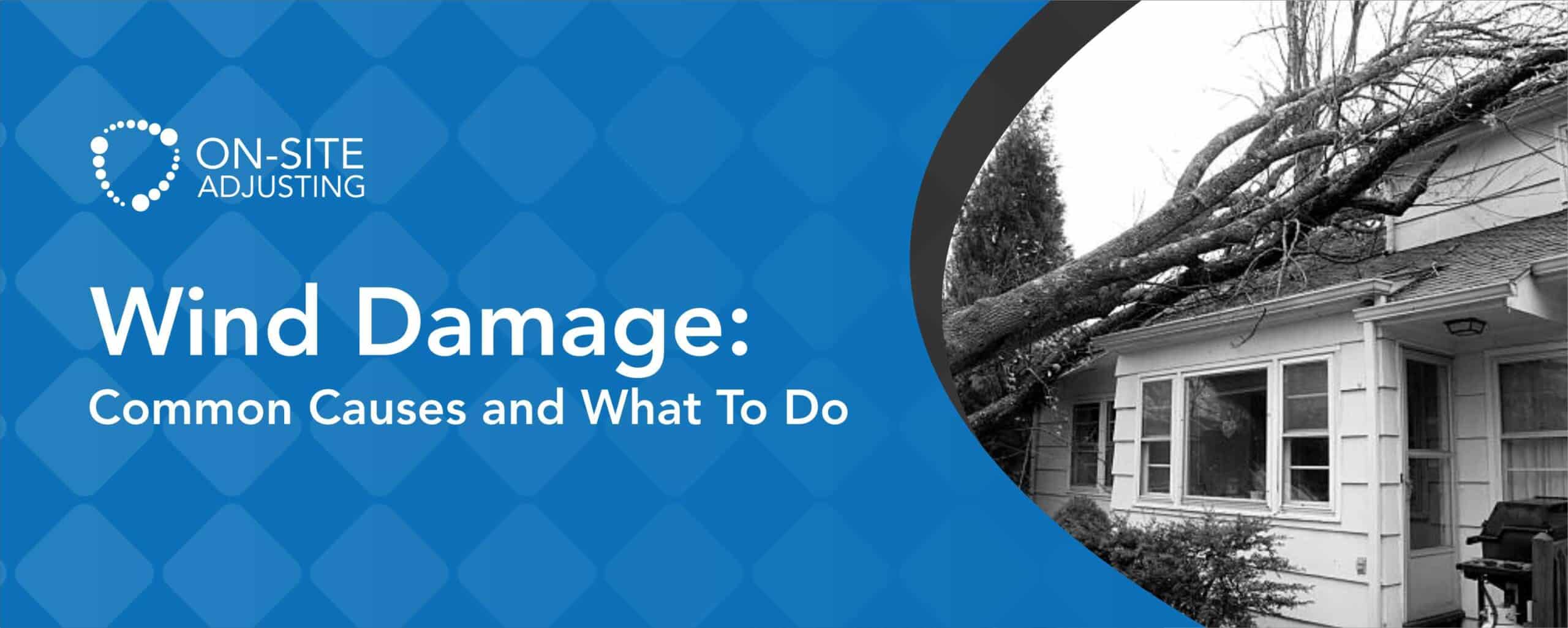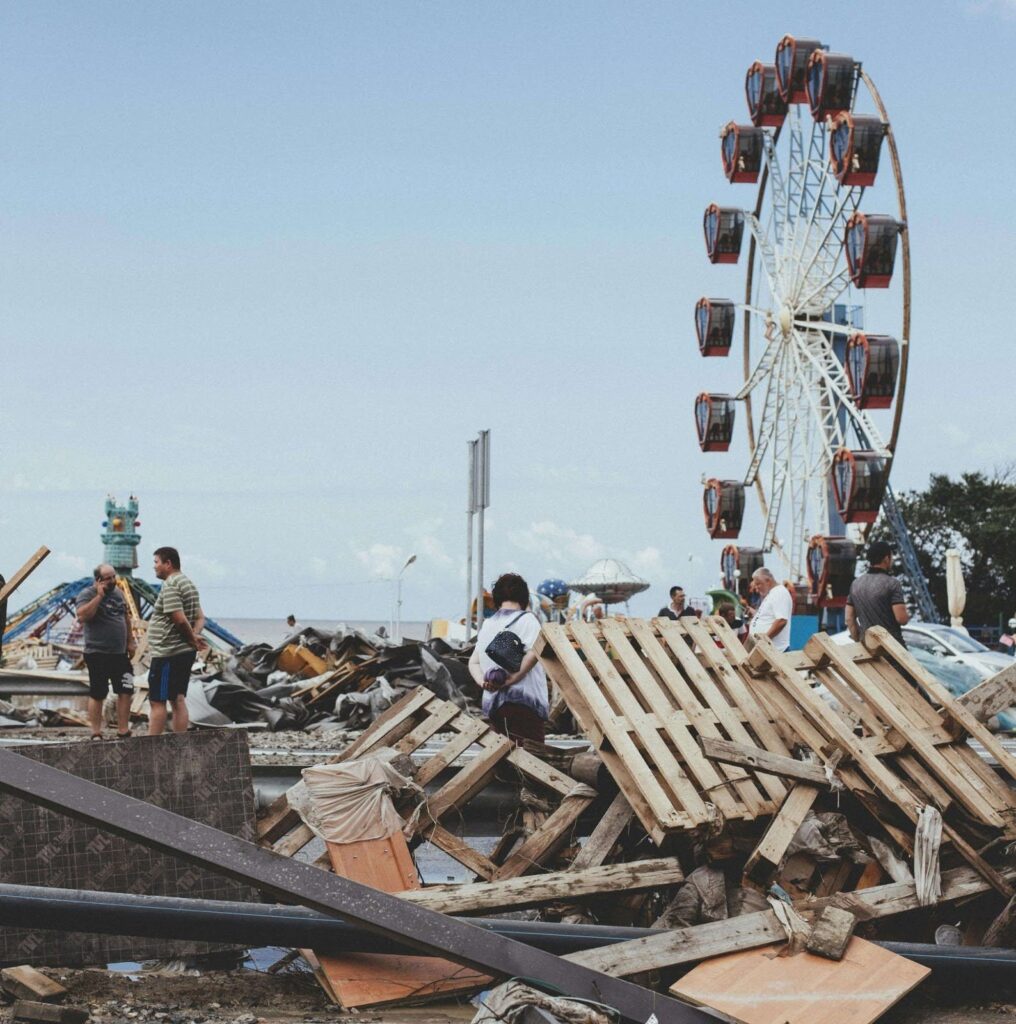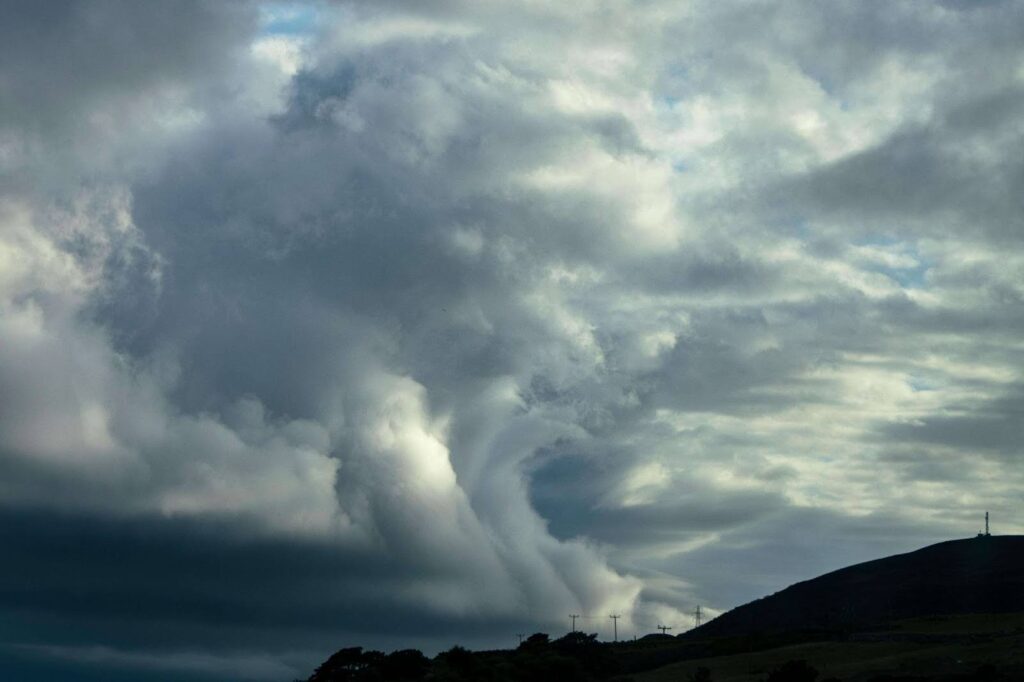
Did you know that 2024 has been termed the most active tornado season since 2017 for the United States? As a homeowner or business in the US, you should know how to protect your property against wind damage. Understanding what causes wind damage and its effects on your property is also important. This will help you avoid costly repairs and long-term issues. If you are dealing with a wind damage claim, consult a public adjuster immediately for guidance and clarity. They will also help you maximize your settlement and grant you ease.
In this article, we will walk you through wind damage in its entirety. Also, expect to learn what to do when you discover wind damage. Finally, we will detail the best way to navigate wind damage insurance claims.
What is Wind Damage?

Wind damage refers to the harm that strong winds cause to structures and objects. These winds are associated with windstorms, hurricanes, or even severe thunderstorms. Furthermore, windstorms often occur alongside heavy rainfall which can also cause water infiltration in your home. Wind speeds can range from mild breezes to destructive gales that can uproot trees and cause extensive damage.
Strong winds negatively impact properties in different ways. Firstly, they can damage the structural components of your property. For example, winds can shatter your windows and blow shingles off your roof. Secondly, extreme wind can impact pressure on already vulnerable parts of your property. This is especially so for older properties whose structural integrity may have weakened over time. Lastly, winds stir up a lot of debris. When the wind is strong enough, it could push the debris into your property, causing further damage.
Furthermore, wind damage poses health and safety risks as flying debris can severely injure people. This can lead to broken bones and lacerations
What Are the Common Causes of Wind Damage?

Severe Weather Conditions
Severe weather conditions, particularly hurricanes and tornadoes, are notorious for causing significant wind damage. Hurricane winds can exceed 74 mph, and tornadoes can reach speeds over 300 mph. The intense force of these winds can obliterate buildings, tear off roofs, and shatter windows. Furthermore, heavy rainfall associated with these storms often exacerbates the damage, leading to flooding and additional structural issues.
Strong Storms and Thunderstorms
Even without hurricanes or tornadoes, strong thunderstorms can produce powerful winds. These winds can be straight-line winds, which can reach speeds up to 100 mph. They often cause damage similar to that of a tornado but without the rotating action. Storms with intense downdrafts or microbursts can also produce significant wind damage. Microbursts, in particular, are short-lived but intense bursts of wind that can cause localized destruction.
Seasonal Weather Patterns
In some regions, wind damage is a common issue due to seasonal weather patterns. For example, during winter, strong cold fronts can bring gusty winds that may damage structures and vegetation. Additionally, spring and autumn can see strong winds due to shifting weather systems. These winds might not be as extreme as those in a hurricane or tornado but can still cause considerable damage over time.
Local Wind Effects
Local wind effects can also lead to wind damage. For instance, areas prone to “wind tunnels,” where wind funnels between buildings or through narrow valleys, can experience intensified wind speeds. Additionally, coastal areas are often more susceptible to wind damage due to their exposure to prevailing winds from the ocean. Wind patterns in these areas can be consistent and strong, leading to ongoing wear and tear on buildings and other structures.
Poorly Maintained Structures
Another common cause of wind damage is poorly maintained structures. Aging roofs, loose shingles, and unsecured windows are more vulnerable to wind damage. If a building’s exterior is not properly maintained, even moderate winds can exacerbate existing vulnerabilities. This leads to more severe damage. Regular inspections and maintenance can help to further mitigate these risks.
Tree Damage
Trees near structures can pose a significant risk during high winds. Trees with weakened or dead branches can break off and cause damage to homes and other buildings. Additionally, strong winds can uproot entire trees, which can then fall onto structures. Proper tree maintenance, including regular pruning and removal of dead branches, can help reduce the risk of such damage.
Construction Quality
The quality of construction can significantly impact a building’s susceptibility to wind damage. Structures built with poor-quality materials or inadequate methods may not withstand strong winds effectively. For example, insufficiently anchored roofs or poorly installed siding can be easily damaged. Investing in quality construction and adhering to building codes can enhance a building’s wind resistance.
What to Do After Discovering Wind Damage
Having something out of your control damage your property can be unnerving. However, it is important to be proactive once you discover the damage. This determines how quickly you can start the restoration process and get your property looking as good as new.
You should contact a public adjuster immediately after discovering the damage. They will handle all aspects of your claim on your behalf. This ensures precision and expertise throughout your claims process. After discussing with your public adjuster, consider doing the following:
Assess the Damage
First and foremost, assess the extent of the damage. Begin by inspecting the exterior of your home or building. Look for obvious signs of damage such as missing shingles, broken windows, or damaged siding. If it is safe, check the interior for signs of water leaks or structural issues. Be cautious of potential hazards such as exposed electrical wires or weakened structural elements.Document the Damage
Document the damage thoroughly for insurance purposes. Take clear, detailed photographs of all affected areas. Make sure to capture both wide-angle and close-up shots. If possible, create a video walkthrough of the damaged areas. Accurate documentation will help your insurance company process your claim more efficiently. You can also use your documentation to get repair quotes from restoration companies.Make Temporary Repairs
While waiting for professional help, make temporary repairs to prevent further damage. For example, cover broken windows with plastic sheeting or plywood. Secure loose roofing materials with tarps. These temporary fixes can help minimize additional damage until you can make permanent repairs. However, ensure that any repairs do not put you at risk.Contact a Professional
After assessing and documenting the damage, contact a professional to evaluate the situation. Hire a licensed contractor or a roofing specialist to inspect the damage thoroughly. They can provide an accurate estimate for repairs and offer advice on addressing the damage. Professional assessments are also crucial for ensuring that repairs meet safety and building code standards.Notify Your Insurance Company
Contact your insurance company as soon as possible to report the damage. Provide them with the documentation you gathered and explain the situation clearly. Your insurance company will guide you through the claims process and may send an adjuster to assess the damage further. Keep a record of all communications with your insurance company for reference.
How to Prevent Wind Damage

Although wind damage is unpredictable, there are some precautions you can take to ensure your property doesn’t suffer maximum damage. Below are some things you should do to lower the chances of wind damage:
Regular Maintenance
Regular maintenance is key to preventing wind damage. Inspect your roof, windows, and siding periodically to ensure they are in good condition. Replace any missing or damaged shingles and repair any cracks or gaps in the siding. Regular maintenance helps to identify and address vulnerabilities before they become major issues.Strengthen Your Roof
Strengthening your roof can help protect against wind damage. Consider upgrading to wind-resistant roofing materials, such as asphalt shingles with high wind ratings or metal roofing. Ensure that your roof is securely fastened to the structure with appropriate roofing nails and underlayment. Consult a roofing professional for recommendations on improving your roof’s wind resistance.Secure Loose Items
Secure any loose items around your property that could become projectiles in strong winds. This includes outdoor furniture, grills, and garden tools. Store these items in a shed or garage when not in use. Additionally, trim back any overhanging branches that could potentially fall onto your property during high winds.Reinforce Windows and Doors
Reinforce windows and doors to enhance their resistance to wind damage. Install impact-resistant windows or add storm shutters for added protection. Ensure that doors are properly sealed and equipped with strong, wind-resistant frames. For areas prone to high winds, consider installing reinforced garage doors as well.Upgrade Your Landscaping
Landscaping can also play a role in wind damage prevention. Plant trees and shrubs strategically to act as windbreaks. Choose wind-resistant species. Also, ensure that you plant them far enough from your home to avoid potential damage. Proper landscaping can reduce wind speeds around your property and further minimize the risk of damage.
How to Handle Wind Damage Insurance Claims
Regular homeowners insurance policies usually cover property damage due to strong winds. Damage due to weather issues such as tornadoes and thunderstorms is usually covered as well. However, dealing with the insurance claim can be tough. Here is the best way to handle any insurance claims arising from wind damage:
Hire a Public Adjuster
A public adjuster can help fast-track your insurance claim. They handle insurance claims on behalf of policyholders. They also have expert negotiation skills which could translate to a higher settlement for you. Furthermore, public adjusters build relationships with insurance companies. This means that they can guarantee you a favorable claim outcome almost every time.File a Claim Promptly
File your insurance claim as soon as possible after discovering the damage. Delays in filing can result in complications or even denial of your claim. Provide all necessary documentation, including photos, repair estimates, and any relevant details about the damage. Follow the instructions provided by your insurance company to ensure a smooth claims process.Review Your Insurance Policy
Review your insurance policy to understand your coverage. Check the terms related to wind damage and ensure that you are aware of any deductibles or coverage limits. Understanding your policy will help you manage your expectations and ensure that you follow the correct procedures.Keep Detailed Records
Keep detailed records of all communications, repairs, and expenses related to the wind damage. Maintain copies of invoices, receipts, and correspondence with contractors and your insurance company. This documentation will be valuable if there are disputes or if you need to file additional claims.Cooperate with the Insurance Adjuster
When an insurance adjuster visits your property, cooperate fully with them. Provide access to all damaged areas and answer any questions they may have. The adjuster’s assessment will play a crucial role in determining the amount of compensation you receive. Ensure that their assessment aligns with your documentation and repair estimates. You should also let your public adjuster handle all communications with the insurance adjuster to avoid any pitfalls.Appeal if Necessary
If your insurer denies your claim or if the settlement offer is not satisfactory, consider appealing the decision. Review your policy and the adjuster’s report to understand the basis of the denial or low offer. You may need to provide additional evidence or better still, let your public adjuster handle things for you.
Conclusion
Wind damage can pose serious risks to your property. However, you can better manage and mitigate damage with the tips provided in this article. Ensure you assess and document damage promptly. Make temporary repairs and take preventive measures to protect your property and minimize repair costs. Handling insurance claims with diligence and knowing your coverage will also ensure that you receive needed support. With proper preparation and response, you can safeguard your property from the potentially destructive forces of wind.
Public adjusters can speed up your wind damage insurance claim. They can also ensure that the insurance company pays for all repair and replacement costs. On-Site Adjusting is the reputable public adjuster you need. Contact us today to take advantage of our free consultation for first-timers.












